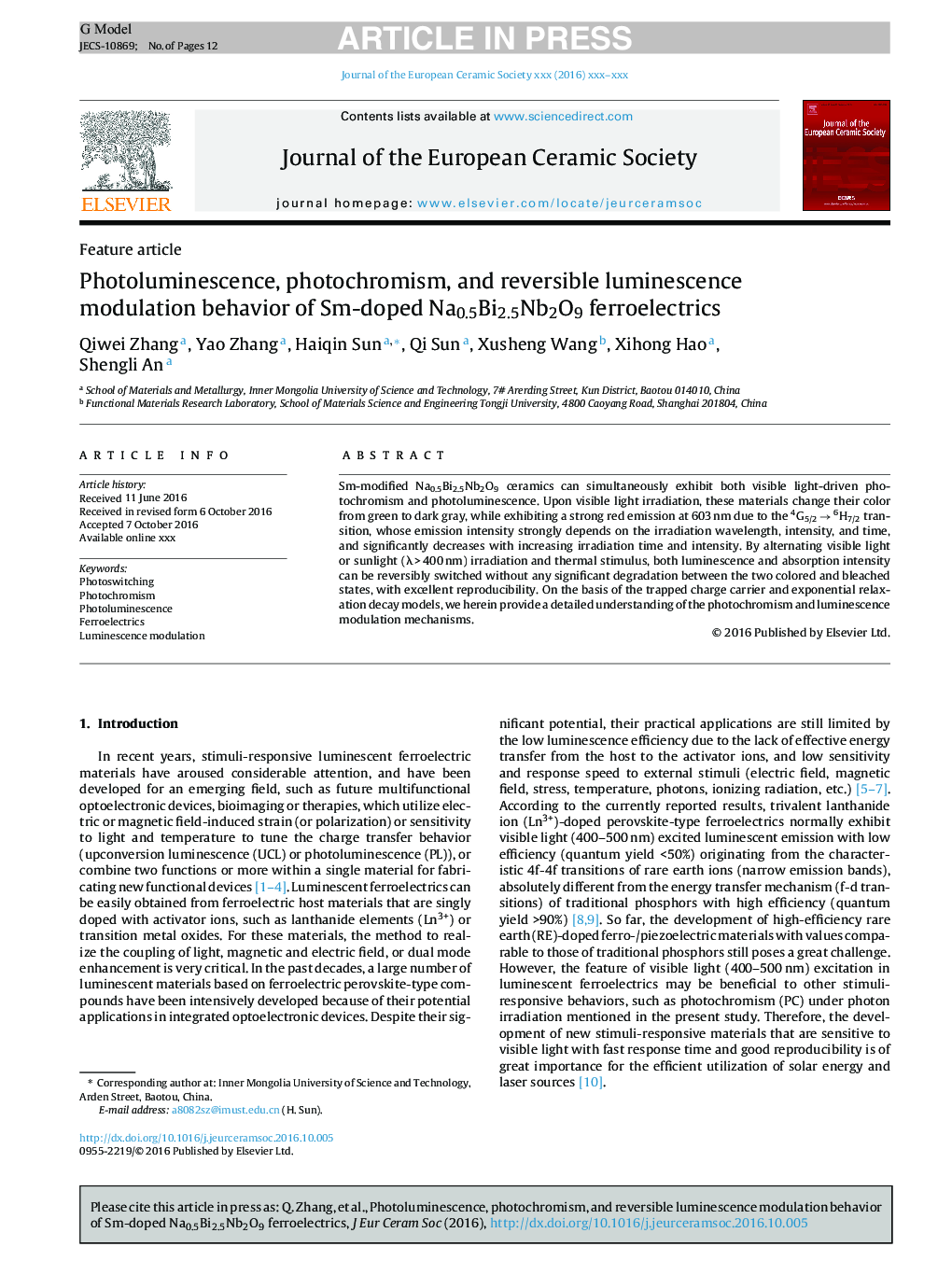| Article ID | Journal | Published Year | Pages | File Type |
|---|---|---|---|---|
| 5440613 | Journal of the European Ceramic Society | 2017 | 12 Pages |
Abstract
Sm-modified Na0.5Bi2.5Nb2O9 ceramics can simultaneously exhibit both visible light-driven photochromism and photoluminescence. Upon visible light irradiation, these materials change their color from green to dark gray, while exhibiting a strong red emission at 603 nm due to the 4G5/2 â 6H7/2 transition, whose emission intensity strongly depends on the irradiation wavelength, intensity, and time, and significantly decreases with increasing irradiation time and intensity. By alternating visible light or sunlight (λ > 400 nm) irradiation and thermal stimulus, both luminescence and absorption intensity can be reversibly switched without any significant degradation between the two colored and bleached states, with excellent reproducibility. On the basis of the trapped charge carrier and exponential relaxation decay models, we herein provide a detailed understanding of the photochromism and luminescence modulation mechanisms.
Related Topics
Physical Sciences and Engineering
Materials Science
Ceramics and Composites
Authors
Qiwei Zhang, Yao Zhang, Haiqin Sun, Qi Sun, Xusheng Wang, Xihong Hao, Shengli An,
